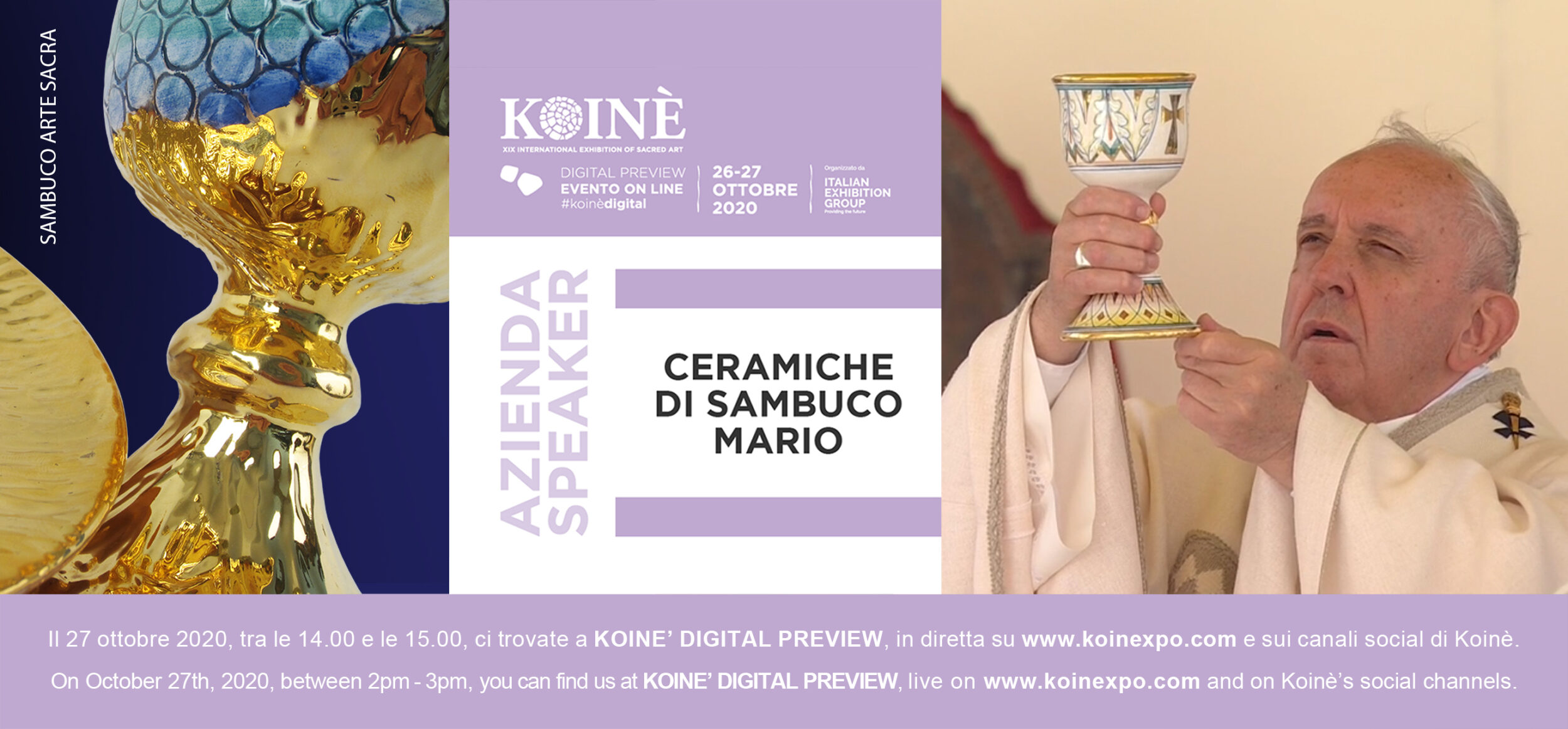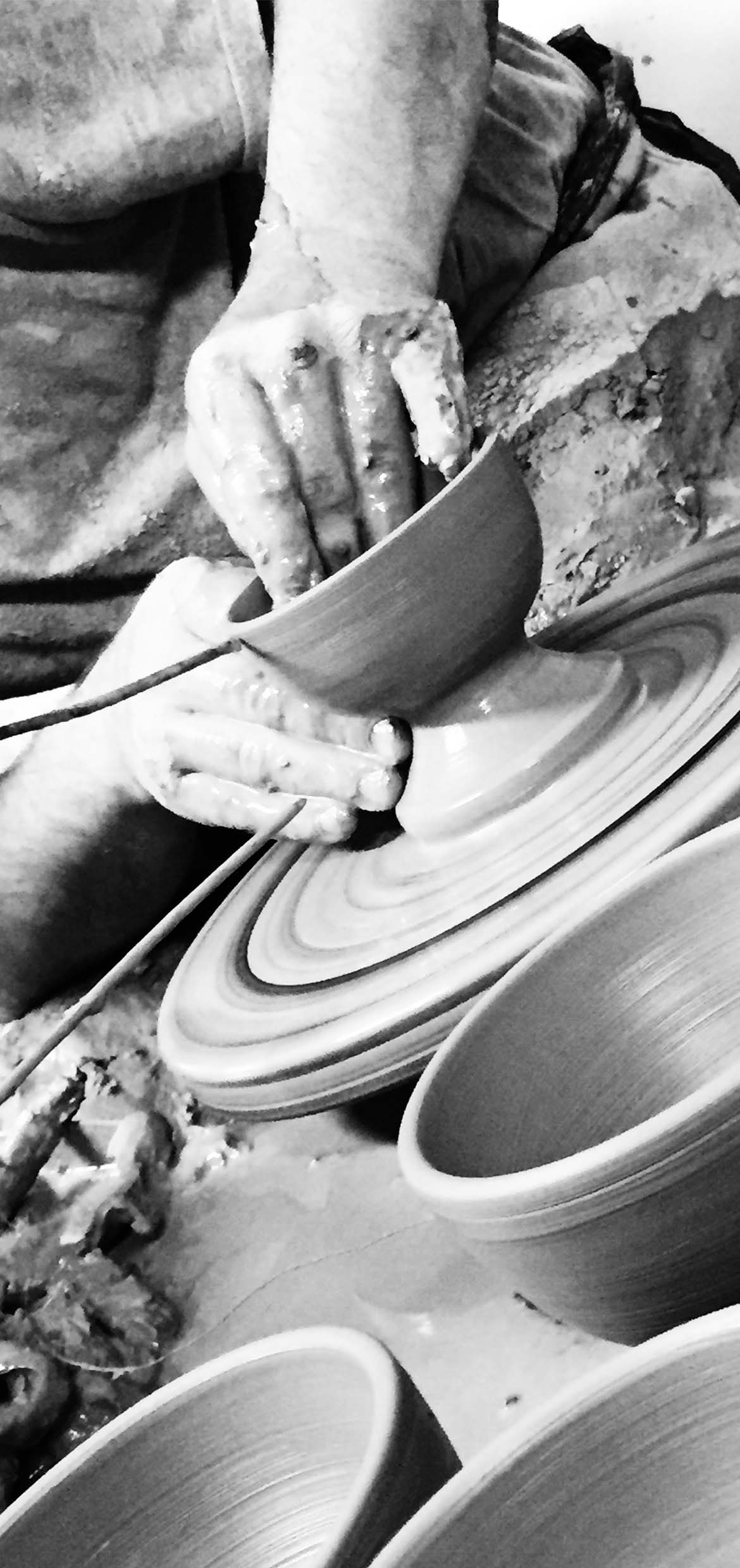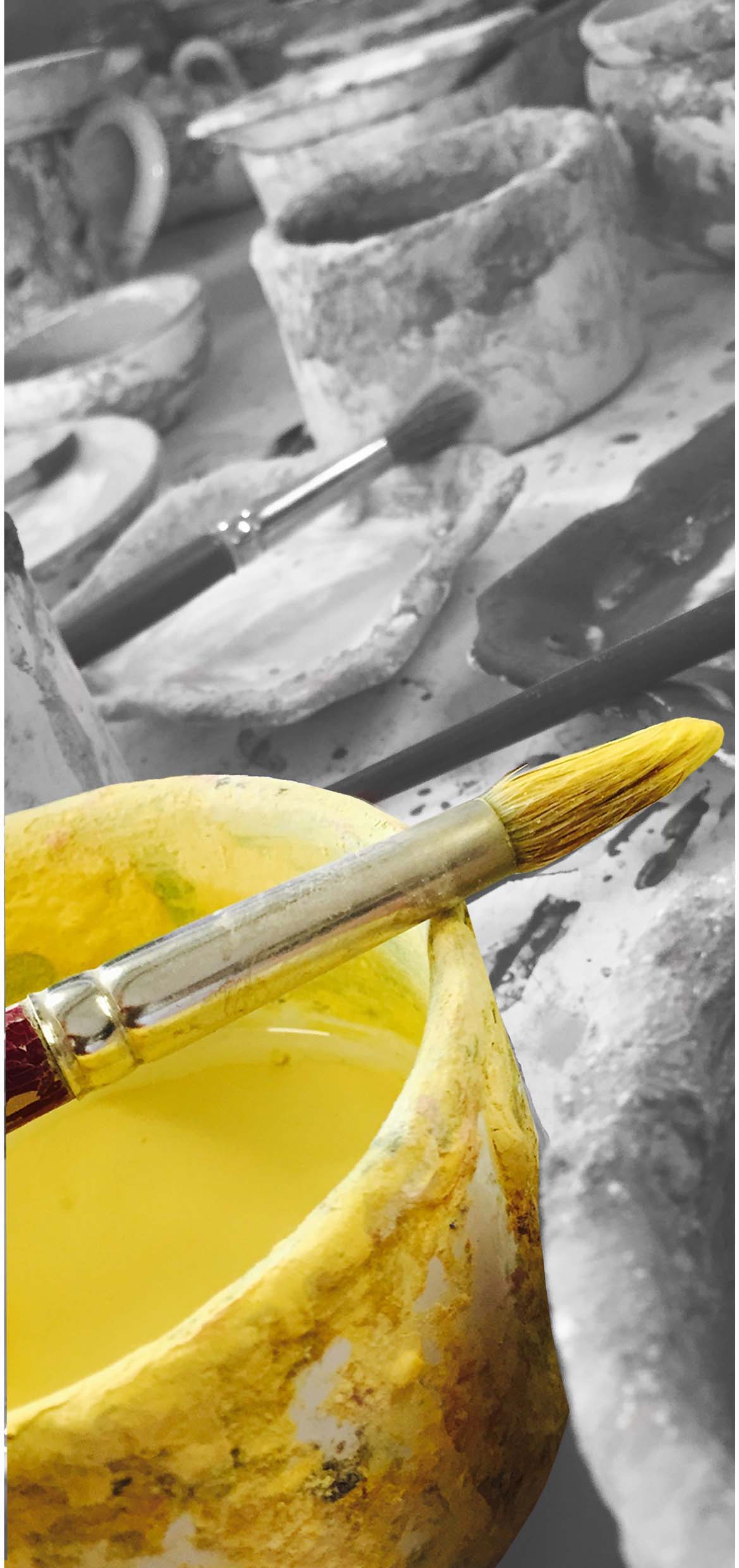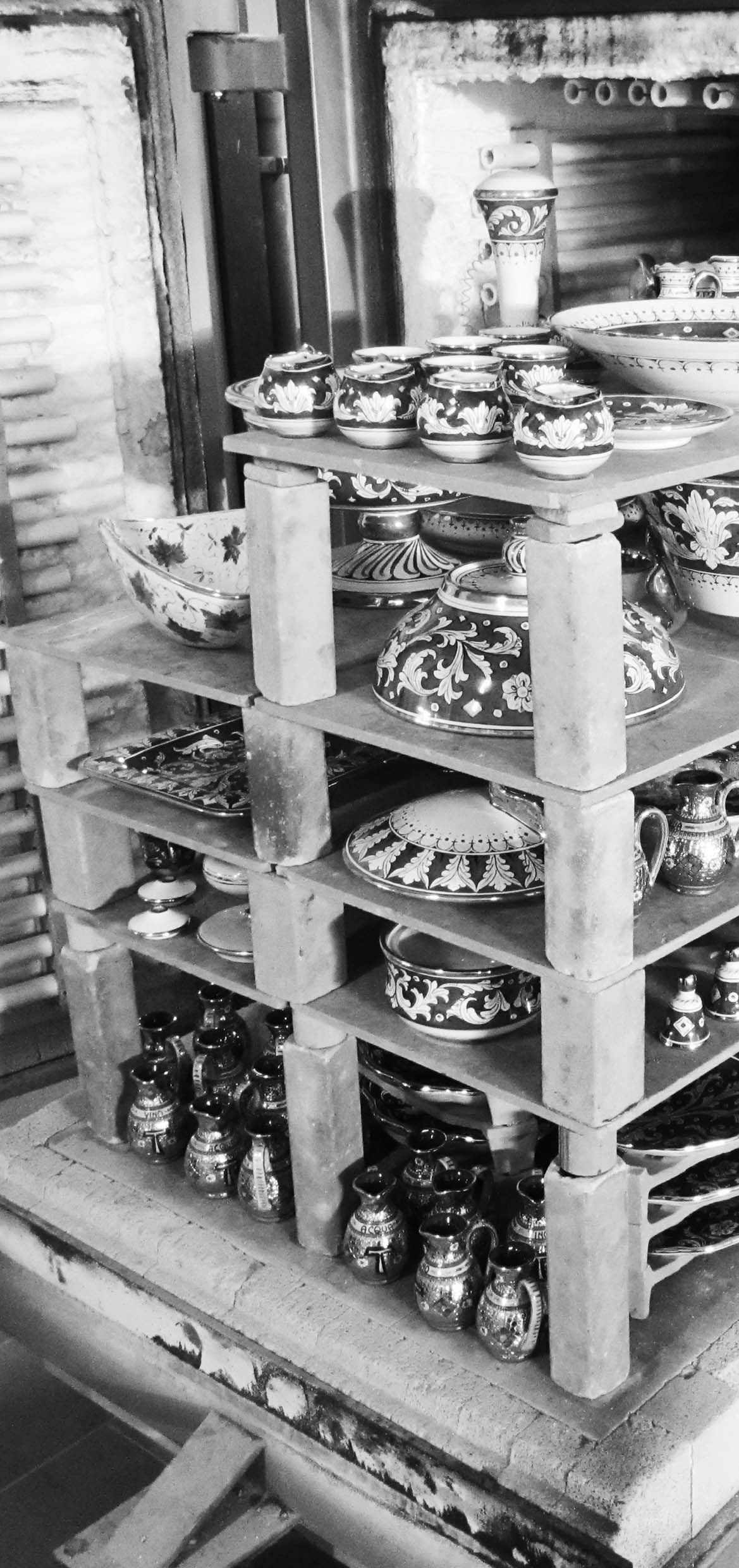The technique inherent to the processing of ceramics has very ancient origins. This art, which consists of the manufacture of earth objects, manually or mechanically forged and then subsequently fired, is traced back to the Middle Ages, but evidences of its use dates back to prehistoric time.
After the first firing, terracotta, maiolica is painted and embellished with beautiful patterns: the object is no longer just an instrument aimed at a practical function, to make up for a need, but also becomes an object of decoration, able to represent a social status and telling a story.
There are many archaeological finds such as ceramic amphorae that tell the myths of the Greek and Roman deities, as there are many funeral vases that tell the story of family that honors the dead or the deeds performed in battle, up to the wonderful historiated maiolica of the Renaissance.
The creative process
First cycle
Creation of the shape using methods suitable for the item to be produced. Lathe shaping enables creation of any shape or size as long as it is round. Other shapes (hexagons, ovals, complex shapes, etc.) will require various traditional procedures such as modeling by hand with plaster casts etc.
Second cycle
Usually the paint is applied over the glaze since it is only performed by hand over the base color (embel) applied in the previous stage. The colors used for decorating are produced with ground minerals, which are then diluted with water and applied to the object by hand using various types of paint brush, depending on the type of painting or detail required on the surface. One of the problems encountered when painting pottery is that the colours used for the decoration will change hue after the second firing, so the artist will need to foresee the end effect of the applications.
Third cycle
The company is also specialized in the creation of traditional and contemporary decorations that require the application of metals such as gold, ruby, platinum and other metallic lusters. For lines with metals, a third processing cycle is required after the second firing in order to complete the established decoration. It is applied, always manually and by brush, gold or other precious metal in the pre-established spaces on the object and at the opening of the kiln, after third firing, you can admire all the splendor and brilliance of the precious materials applied.



